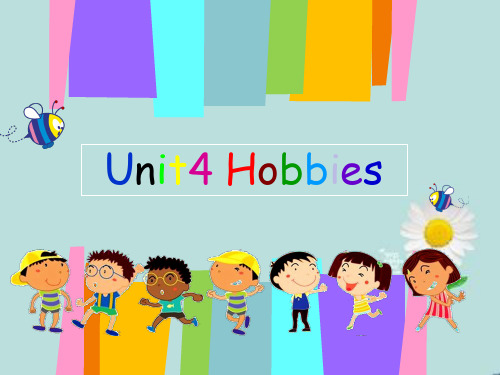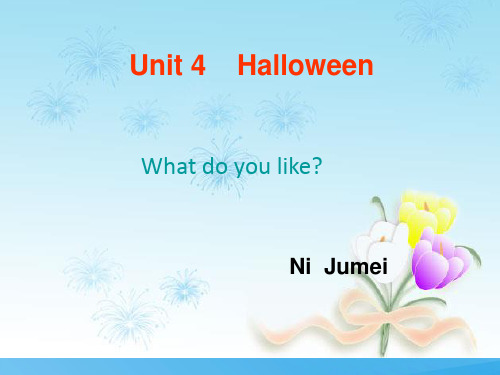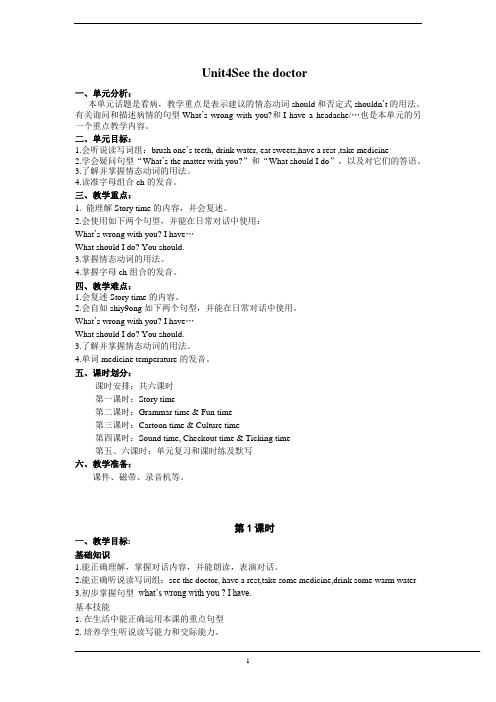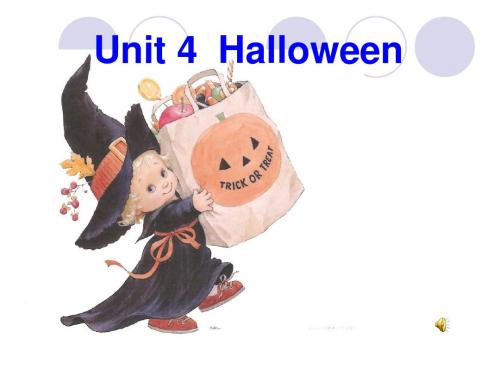牛津小学英语5A Unit4 教案(1)教案
- 格式:docx
- 大小:16.77 KB
- 文档页数:6


小学英语新课程标准教材英语教案( 2019 — 2020学年度第二学期 )学校:年级:任课教师:英语教案 / 小学英语 / 小学五年级英语教案编订:XX文讯教育机构英文版牛津英语5A教案-Unit1(5st)The first day atschool教材简介:本教材主要用途为通过学习英语的内容,提高学生的语言技能,增加一项语言能力,有利于国际化的日常交流、生活、工作等,本教学设计资料适用于小学五年级英语科目, 学习后学生能得到全面的发展和提高。
本内容是按照教材的内容进行的编写,可以放心修改调整或直接进行教学使用。
title: unit 1 (5th)purpose:1. learn to say the 3 skill word and sentence: park; shall we go and play there?2. learn the 4 skill words: house, flower.3. learn to say the dialogue of “read and act.”focus:learn the 4 skill words: house, flower.learn to say the dialogue of “read and act.”difficulties:the pronunciation of the word “flower”.read and act out the dialogue.teaching aids:tape, picture, projectpreparation:1. writing the title on the blackboard.2. pictures, project, tape and recorder.writing on the blackboard:unit 1 the first day at schoolyes,……flowers….is there a park near your house?are there any swings?shall we go and play there?summary of this lesson:通过谈论公园里的花草树木及设施,再次练习is there a/an …? are there any …?等句型。


Unit4See the doctor一、单元分析:本单元话题是看病,教学重点是表示建议的情态动词should和否定式shouldn’t的用法。
有关询问和描述病情的句型What’s wrong with you?和I have a headache/…也是本单元的另一个重点教学内容。
二、单元目标:1.会听说读写词组:brush one’s teeth, drink water, eat sweets,have a rest ,take medicine2.学会疑问句型“What’s the matter with you?”和“What should I do”,以及对它们的答语。
3.了解并掌握情态动词的用法。
4.读准字母组合ch的发音。
三、教学重点:1. 能理解Story time的内容,并会复述。
2.会使用如下两个句型,并能在日常对话中使用:What’s wrong with you? I have…What should I do? You should.3.掌握情态动词的用法。
4.掌握字母ch组合的发音。
四、教学难点:1.会复述Story time的内容。
2.会自如shiy9ong如下两个句型,并能在日常对话中使用。
What’s wrong with you? I have…What should I do? You should.3.了解并掌握情态动词的用法。
4.单词medicine temperature的发音。
五、课时划分:课时安排:共六课时第一课时:Story time第二课时:Grammar time & Fun time第三课时:Cartoon time & Culture time第四课时:Sound time, Checkout time & Ticking time第五、六课时:单元复习和课时练及默写六、教学准备:课件、磁带、录音机等。
第1课时一、教学目标:基础知识1.能正确理解,掌握对话内容,并能朗读,表演对话。


小学新标准英语教学设计(优秀5篇)牛津小学英语5A教案——Unit 篇一unit 5 review and check 一教时教学目标:1.复习使熟练掌握本单元所学的句型,并能灵活运用。
2.完成教科书unit 5 a:look read and write.教学过程:一。
warm up:1.师生对话:t:what's in/on/under/beside/between/behind?s:there is/are ….t:is/are there …?s:yes, there is/are. no, there isn't/aren't.t:how many … are there?s: there is/are …t:can you …?s:yes, i can. no, i can't.t: what can you do?s: i can …t:do you …?s:yes, i do. no, i don't.2. 生生对话。
二。
reviesion:(对话)1.安排一个小品表演擂台赛,将全班分成八组,课前作好准备,课上表演,并给每组评分,最高分为优胜,给予奖励。
以此复习对话。
2.look read and write.1).让学生读句子了解各句的意思。
2).看图将各句填入相应的方框内。
3).讲解正确答案和各句的意思,齐读几遍。
4).同桌练习,根据图片情景进行交谈。
三。
game:1.sing a song :two jacketsl.2.say a rhyme:do you like my house.四。
assignment:1.熟读本学期所学对话,并能背诵。
2.复习四会单词和句子并默写。
第二课时教学目标:1.复习四会单词和句子。
2.完成书上练习:b. c.教学过程:一。
warm up:1.师生对话:t:what's in/on/under/beside/between/behind?s:there is/are ….t:is/are there …?s:yes, there is/are. no, there isn't/aren't.t:how many … are there?s: there is/are …t:can you …?s:yes, i can. no, i can't.t: what can you do?s: i can …t:do you …?s:yes, i do. no, i don't.2.sing song:what are you doing?二。
一、中英互译:1、许多出租车司机___________________2、听音乐_______________________3、一只猴子面具______________________4、在每周六_____________________5、买一些东西________________________6、look young____________________7、Helen and her parents_____________8、have a Music lesson____________9、the clock on the wall _________________10、play basketball with their friends________________________________二、翻译句子:1、你喜欢游泳吗?不,我喜欢跳舞。
_________________________________________________________________ 2、你喜欢做一架飞机模型吗?是的,我喜欢。
_________________________________________________________________ 3、我喜欢桃子。
我也是。
_________________________________________________________________ 4、他们喜欢在下课后玩游戏。
_________________________________________________________________ 5、你会弹钢琴吗?不,但是我会演奏吉他。
_________________________________________________________________三、根据答句,填写恰当的疑问词。
1、___________ is the toy car? It’s 100 yuan.2、___________ do you like? I like skating.3、___________ flowers are there in the vase? There are eighteen.4、___________ can you do? I can make a puppet.5、___________ is your new sweater? It’s white.6、___________ is on the wall? There are some pictures.7、___________ are the cakes? They are in the fridge.8、___________ book is this? It’s Betty’s.9、___________ is the man in black? He’s my father.10、__________ are you? I’m eleven.四、用所给单词的适当形式填空:1、Li Lei and Lin Tao _________ ( be ) good friends.2、Are there __________ ( some ) plates on the table?3、This is ___________ ( Helen ) toy doll.4、What do you like? I like ___________ ( tiger ).5、I like ___________ ( play ) table tennis very much.五、改错:1、What are their job? They are teachers.2、Where are your shoes? It’s under the bed. ____________________1、He can swimming, but I can’t. _______________4、There are an elephant and some monkeys in the zoo._____________________________________________________5、Come here and play the football with us.___________________________________________六、按要求写出下列单词的相应形式:1、for(同音字)_________________2、by(同音字)_______________________3、me(主格)___________________4、let’s(完全形式)___________________ 2、family(复数)_______________ 6、he(复数)_________________________ 7、have(现在分词)_______________ 8、big(反义词)______________________9、these(单数)_________________ 10、Nancy(名词所有格)______________七、翻译下列词组:1. 一张新的世界地图________________ 6、两昨旧的大楼_______________2. 一间大书房______________________ 7、所有的医生_________________3.桌上的电话______________________ 8、下午四点___________________4.买一只玩具猪____________________ 9、互相_______________________5.一些红色的灯笼___________________10、第一天____________________八、按要求改写句子:1.Listen to the teacher. (改为否定句)_________________________________2.I like singing. (改为一般疑问句)__________________________________3.They like tiger masks. (改为否定句)______________________________________4.We like reading. (对划线部分进行提问)_____________________________________。
英文版牛津英语5A教案——Unit1(5st)Thefirstdayatschool 五年级英语教案title: unit 1 (5th)purpose:1. learn to say the 3 skill word and sentence: park; shall we go and play there?2. learn the 4 skill words: house, flower.3. learn to say the dialogue of “read and act.”focus:learn the 4 skill words: house, flower.learn to say the dialogue of “read and act.”difficulties:the pronunciation of the word “flower”.read and act out the dialogue.teaching aids:tape, picture, projectpreparation:1. writing the title on the blackboard.2. pictures, project, tape and recorder.writing on the blackboard:unit 1 the first day at schoolyes,……flowers….is there a park near your house?are there any swings?shall we go and play there?summary of this lesson:通过谈论公园里的花草树木及设施,再次练习is there a/an …? are there any …?等句型。
对话中出现的shall we …? good idea.在4b中以学过,学生不难理解。
教学设计:常州市局前街小学金蓉Unit4of5AHalloween第一课时一、教学内容:A/P30,B,C二、教学目标:认知目标:1.让学生通过课前收集资料和本课学习,了解万圣节的有关知识。
2.能听懂、会读、会说单词Halloween,pumpkinlantern,candle,mask,vase,if,tomorrow3.能听懂、会读、会说、会写单词family,thing,need4.能听懂、会读、会说日常交际用语:WhatdoweneedWeneed…5.能听懂、会读、会说、会写句型:Doyoulike…Yes,Ido./No,Idon't.Let'sbuy…功能目标:1.让学生通过本课学习,掌握表达“爱好、需要”的交际功能的方式。
2.让学生通过课前收集万圣节的资料和本课学习,培养学生跨文化交际的意识和能力。
情感目标:1.让学生通过课前收集万圣节的资料和本课学习,进一步激发学生学习英语的兴趣。
2.培养学生团队合作的意识和与他人交往的能力。
三、教学重点:1.让学生通过课前收集资料和本课学习,了解万圣节的有关知识。
2.能听懂、会读、会说单词pumpkinlantern,candle,mask,vase,if,tomorrow3.能听懂、会读、会说、会写单词family,thing,need4.能听懂、会读、会说句型:WhatdoweneedWeneed…5.能听懂、会读、会说、会写句型:Doyoulike…Yes,Ido./No,Idon't.Let'sbuy…四、教学难点:1.单词pumpkinlantern,candle的读音。
2.单词family的复数。
3.词组buythingsfor…的用法。
4.句型Doyoulikemasks中可数名词复数的正确使用。
五、教学准备:1.学生准备:课前收集万圣节的资料,每人做一个面具。
2.教师准备:多媒体课件、课文A的挂图、录音机、磁带、准备几个面具(老虎、狗等),单词卡片,教具a pumpkinlantern六、教学过程:Step1Freetalk:Let’ssingasong.“Wecansinganddance”together.Ss:Singthesong.:DoyouknowwhatdayisJune1st(Children’sDay)(Teachers’Day)WhataboutOctober31st(Halloween)Ss:Learn:“Halloween”Step2Presentation:!DoyouknowtheoriginofHalloween?Ss:(自由发言)万圣节的由来:二千多年前,塞尔特族人(即目前的苏格兰人、爱尔兰人等)一年之中最害怕的日子莫过于十月三十一日的晚上.每年十月三十一日的前夕是塞尔特族人的年度丰收祭典,象征着一年的结束,以及新一年的开始!每年的这一天是塞尔特族人表达他们对太阳神的敬意的一天,因为太阳神让他们的谷物丰收,以应付即将到来的冬天!可是在这一个夜晚也是恶灵力量最强大的一天,因此塞尔特族的牧师和祭司也会主持祭典,安抚掌管死亡的神!T:(总结)Soitcelebratesautumnharvestandit’salsoaceremonyofthedead.:(Showanobject.)’sthisinEnglishS:It’sapumpkinlantern.T:(Showanobject.)Look,it’sapumpkin.Ss:Learn:“pumpkin”)T:What’sinthepumpkinThere’sacandle.Ss:Learn:“candle”T:Wecanusethemtomakeapumpkinlantern.Ss:Learn:“lantern”“pumpkinlantern”)T:(Introduce)至于南瓜灯也至少有两种说法。
一种说是人挖空了南瓜又刻上鬼脸,点上烛火以驱散鬼魂的;另一种说是鬼魂点上烛火,试图骗取人们上当而跟着鬼魂走,所以人们就在南瓜表面上刻上一个嘲讽的脸面,用以嘲笑鬼魂。
传说因为首先用南瓜的是一位爱尔兰人Jack,所以人们又将鬼脸南瓜灯叫做Jack-O-Lantern.Ss:(Repeat“Jack-O-Lantern”severaltimes):(Showanobject.)What’sthisinEnglishS:It’samask.Ss:Learn:“mask”T:Look,herearesomemasks.(Showthemasks)It’sadog/tiger/pigmask.(P/37PartHofUnit4)T:Pleaselistentoarhyme.Ss:Listenandsaytherhyme.Ss:Learn:“if”Step3:Presentation1.学习句型Do youlike…Yes,Ido./No,Idon't.(1)T:师出示masks时,问学生Doyoulikemasks?S:Yes,Ido.T:Doyoulikepumpkinlanterns?S:Yes,.(2)Practiceinpairs.2.学习Let'sbuy…的句型及其回答当学生操练Ilikepumpkinlanterns.时师说'sbuyapumpkinandsomecandles.Ss:学说这个句子,鼓励用不同句子回答。
3.学习句型WhatdoweneedWeneed…(1)T:Iftomorrowwe’'Pleasediscussingroups.(eg:Weneedsomemasks,somechocolate,someflow ers,apumpkin,avaseandsomecandles.)Ss:Learn:“thing”“buythingsfor…”“need”T:Showapictureofavase.Ss:Learn:“vase”(2)Practiceinpairs.S1:WhatdoweneedS2:Weneed…4.出示课文A的挂图,请学生尝试谈论图片。
Eg:Who’sthatboyHe’'sBen'sbrother.WhereareBenandhisfamilyTheyareinthesitting-room.WhatwouldtheyliketodoTheywouldliketobuythingsforaHalloweenparty.What’sthedateinthepictureIt’Ss:Learn:“family”,askandanswer.T:Whatdotheyneed?WhatdoesRonwanttobuyDoesBenlikemasksWhatelsedotheywanttobuy,readandact.Step4:Consolidation如果明天是万圣节,四人小组讨论万圣节的准备工作。
Step5:IntroduceotherinformationsaboutHalloween.万圣节的游戏:这一天不论大人或小孩,都可以尽其所能的作怪,而不会招致异样的眼光。
大部份的家庭会在院子里摆上几棵南瓜或是和真人一般高的稻草人,并且在窗户上装饰小小的南瓜灯或是挂上一副骷髅;有些人也会在前门上方挂些蜘蛛网。
爱热闹或是有年轻人在家的家庭则会举办化妆舞会,或是将家里装饰成鬼屋!万圣节的打扮:万圣节的装饰多以桔色和黑色为主。
黑色代表像黑猫、蜘蛛和巫婆,桔色代表像南瓜灯(Jack-O‘-Lantern)等等,都是常见的万圣节象征。
另外还有各式面目狰狞的鬼怪和骷髅等等。
不过小朋友和大人的万圣节服装,除了这些较为可怕的打扮之外,也有很多其他的选择,可以打扮成美丽的模样或外星人的模样,总之每年到了万圣节前,就有很多人在伤脑筋要打扮成什么模样,商店也会陈列出许多服装和化妆材料供顾客选择。
万圣节的食物:商店在万圣节前,除了会陈列万圣节服装之外,在商店里也可以看到成堆的大小南瓜,和各式节日特别包装的糖果。
每年秋天是南瓜收成的季节,因此南瓜在年底的节日中,可是重要的主角之一哦!许多人会准备大量的糖果,等万圣节前夕小朋友来敲门索糖时,放在小朋友的提篮或袋子中。
一般超市或糕饼铺,也会为了万圣节推出饼干和蛋糕,一盒盒的桔色的南瓜外形饼干是大家在万圣节派对中,最常选择的点心之一。
现今的万圣节:今天,在美国万圣节是深受孩子们喜爱的节日。
他们在这一天穿戴看起来像骷髅或鬼的面具,或装扮着海盗、仙女等奇装异服,提着南瓜灯笼,在大街小巷挨家挨户地敲门玩"TrickorTreat"(要嘛!招待我,不然我就给您好戏看)的游戏。
大人们通常把家中预备好的糖果、饼干或水果分给来访的小朋友,如果大人不给任何东西,小孩们还真的会玩起把戏来捉弄大人喔!Step6:Assignhomework,readandact..lantern.tabloidabouttheHalloween。
(请学生课后四人一组制作一份关于万圣节的专题小报。
)七、板书设计:Unit4Halloween…Yes,Ido./No,Idon'buythingsfor…'sbuy…needtomorrowWeneed…pumpkinlanterncandlemaskvase。